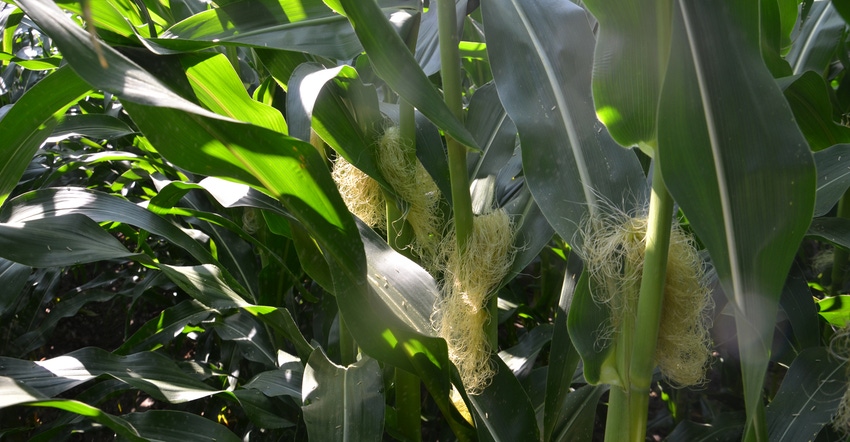
Walking through dark green corn with tassels and silks coming out, Dave Nanda determined that this year’s Corn Watch ’19 field in central Indiana looked like good corn. Disease lesions were confined to the lowest leaves, and there was plenty of moisture.
This field still has lots of yield potential, says Nanda, director of genetics for Seed-Genetics-Direct, Jeffersonville, Ohio. Seed Genetics-Direct sponsors Corn Watch ’19.
“Many plants in the Corn Watch ’19 field are putting out two shoots with silks,” he says. “That’s encouraging.”
The only problem is that this was July 25, not June 25. The field was planted May 28. The biggest questions are if corn will mature before frost, and how much drying time might be left.
According to the Purdue University Corn and Soybean Field Guide, corn reaches physiological maturity 55 to 65 days after the silking, or R1, phase begins. This field could reach black layer from Sept. 18 to Sept. 28. Throw in that late-planted corn matures somewhat more rapidly, and you might move those dates up two or three days.
Purdue and Ohio State University research that discovered more rapid maturity rates for late-planted corn also noted most of the gain occurs by R3. From R3 to R6, maturation time is similar no matter when corn was planted.
When corn is physiologically mature, a black layer forms at the tip of the kernel, essentially closing the door on further movement in or out of the kernel. “As you get close to that point, you can dissect kernels with a pocketknife and determine if the black layer has formed,” Nanda says.
The Catch-22, he says, is that even at black layer, grain is still high in moisture content. The Purdue guide gives a wide range of 25% to 40% moisture at black layer, with the average around 30%. Other sources peg it at 32% to 35%, Nanda says.
Moisture content
The next question is drydown rates in the field. Purdue’s Bob Nielsen determined that when corn nears maturity — two to three weeks ahead of black layer, in mid- to late August — drydown typically proceeds at about 0.8% of moisture loss per day over the whole drydown period. But if corn doesn’t near maturity until mid- to late September, the rate is closer to 0.4% per day. Exact drydown depends heavily upon temperature levels, with warmer temperatures favoring quicker drydown.
Suppose the Corn Watch ’19 field reaches 32% moisture on Sept. 20. During the first week of October, it would likely still be in the 24% to 26% moisture range. Drydown rates slow dramatically as the calendar moves into October, Nanda notes.
“Corn in this field doesn’t have huge roots or lots of brace roots,” he adds. “Root lodging could be an issue.”
The field across the road was only at the 11-leaf stage on July 25. “We will likely be worrying about whether some fields mature before frost, let alone worry about moisture content,” he concludes.
About the Author(s)
You May Also Like




